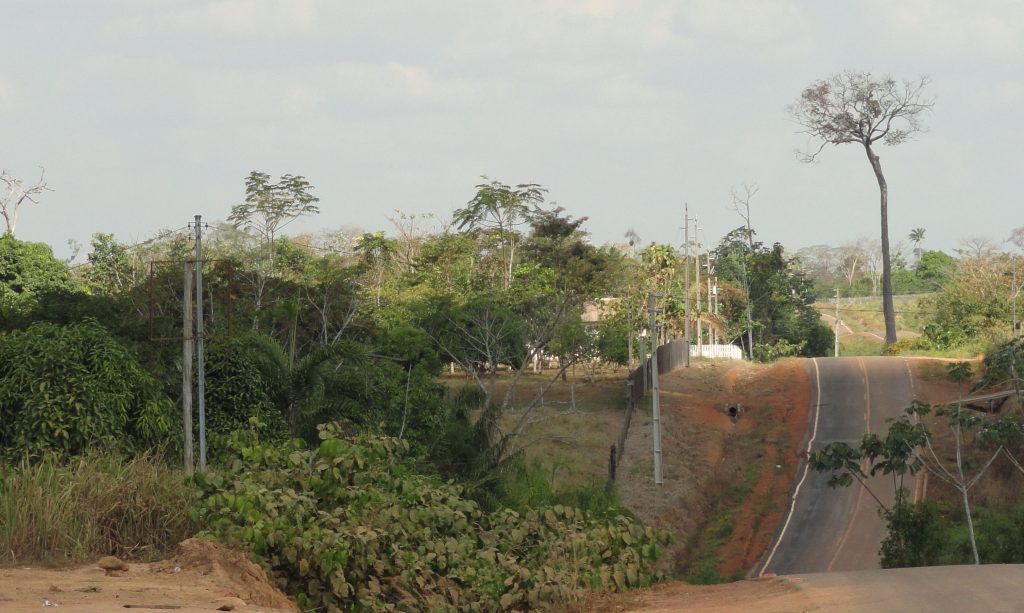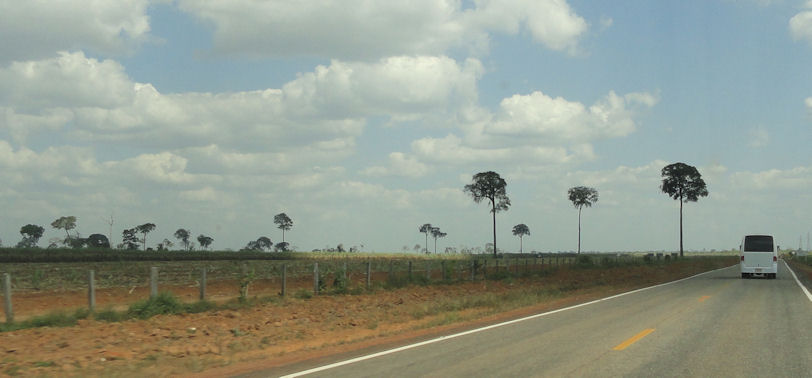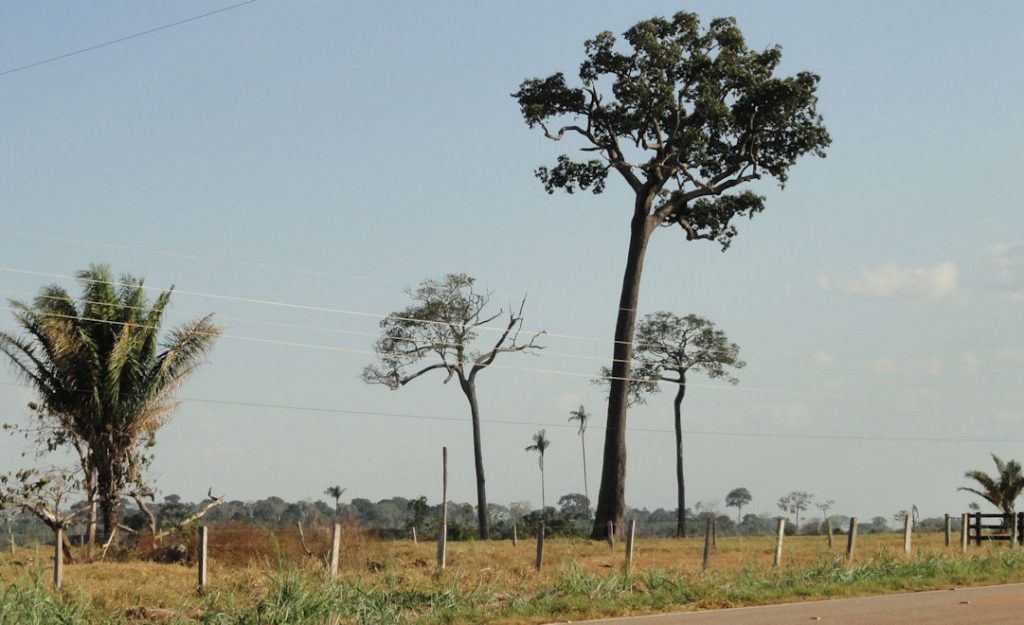
The areas nearest the roads are the most deforested, not surprisingly. The bucolic pasture landscape is actually fairly attractive but a few lonely trees stand as silent witness to the forest that was lost. You can see in the pictures what I mean. The trees are beautiful against the sky, but they are doomed.

You can tell that they grew in thick forests by their lack of lower branches. They grew in an environment where they had to race to the light way overhead. This is not where they live today. These are impressive specimens. The trees are around 150 feet high with massive trunks. Most of them are Brazil nut trees. You recognize that that Christmas-time favorite that is nearly impossible to crack w/o crushing the nut inside too. There is a law against cutting them, so they remain after everything around them flattened. The owners of the land are not allowed to cut them even when they are dead and cannot use the wood even if the tree falls down on its own. It is not a very useful law.
The trees often do not survive long without the sheltering forest and they stop producing seeds, since they require a specific type of pollinating bee. It gets to be a complex story. The bee depends on a type of orchid Coryanthes vasquezii. The orchids produce a scent that attracts small male long-tongued orchid bees. The male bees need that scent to attract females. Without the orchid, the bees do not mate. So no forest means no orchids, which means no bees, which means no seeds, which means no new trees. It is an example of the complex ecological web. But the simple ides is that these are not seed trees that could be expected to spawn a future forest. Beyond that, by making these trees economically not valuable, you shut down any economically motivated endeavors to grow and preserve them.

It gets even more complex. Even if there were seeds, there might not be reproduction. The Brazil nuts are housed in a very thick and heavy shell. It would hurt a lot to get hit with one falling from that distance at the top. The shell does not break easily, but rather requires a type of squirrel to bit it open. These relationships have been building a long time. It is co-evolution. Pull out one thing and they others don’t work anymore. But let me add even one more permutation. The baby trees do not grow well in full sunlight. They germinate in the shade and then wait years for an opening, all the while establishing roots systems. A seedling in full sunlight will die.
As I said, the pastures are attractive and if you didn’t know the story, you would think someone had produced a grassy park with some really big and beautiful trees to provide contrast and shade. It made me sad. We drove out two hours and never passed through an intact forest. I know the road is not the place to look for these things and I sometimes saw trees in the distance that I think were part of intact forests, but there are lots of former forests within shooting distance of any asphalt.
